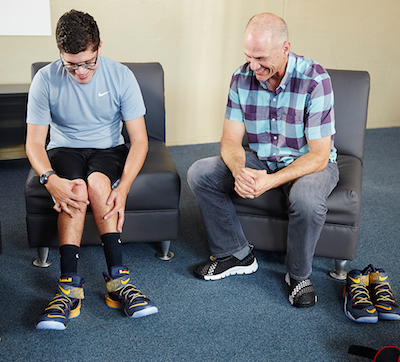Each Tuesday, Solutions Marketing Group offers you advice that can boost sales and increase your company’s presence with the disability market segment. For today’s Tuesday Tip, we bring you an actual case study of learning from your mistakes and getting it right.
In 2000, Nike, found itself in the midst of controversy with the disability community. They published an ad promoting the Air Dri Goat, in hiking and Men’s Journal, Outside and regional outdoors publications. The copy included the following:
“Fortunately the Air Dri-Goat features a patented goat-like outer sole for increased traction so you can taunt mortal injury without actually experiencing it. Right about now you’re probably asking yourself “How can a trail running shoe with an outer sole designed like a goat’s hoof help me avoid compressing my spinal cord into a Slinky on the side of some unsuspecting conifer, therebyr endering me a drooling, misshapen non-extreme-trail-running husk of my former self, forced to roam the earth in a motorized wheelchair with my name embossed on one of those cute little license plates you get at carnivals or state fairs, fastened to the back?”
Is your mouth on the floor?
This struck a nerve within the disability community and the outrage was heard throughout the country. The ad created such a visceral reaction because it was offensive and perpetuated stereotypes. It was pulled immediately after disability rights advocates demanded that it be so, and articles in publications like the Wall Street Journal, covered this horrendous misstep. One of the employees involved in the approval process resigned from Nike, and officials from the company met with advocates in Washington, DC to discuss the ad’s impact.
Fast forward to 2015
 In July, Nike unveiled the creation of the Zoom Soldier 8, which features FLYEASE technology, designed for people with disabilities.
In July, Nike unveiled the creation of the Zoom Soldier 8, which features FLYEASE technology, designed for people with disabilities.
The Zoom Soldier 8 story began back in 2012, when Matthew Walzer, a 16-year-old who lives with cerebral palsy, wrote a letter to Nike asking the company to consider developing a shoe designed for people who have trouble tying shoelaces.
He said, “My dream is to go to the college of my choice without having to worry about someone coming to tie my shoes everyday,” according to Nike. “As a teenager who is striving to become totally self-sufficient, I find this extremely frustrating and, at times, embarrassing.”
The letter made it into the hands of Nike shoe designer, Tobie Hatfield. After reading Matthew’s request, he began working to develop a prototype for a shoe Matthew and other people with disabilities with limited dexterity, could wear comfortably. Instead of laces, the Zoom Soldier 8 features Flyease technology, a type of zipper that goes around the heel of the shoe. This makes it easier for people with limited hand function to easily pull the shoes on and off with one hand. The new design includes the same ankle support as Lebron James’s footwear (James is Matthew’s favorite basketball player). How cool is that?!
What our team, at the Solutions Marketing Group has discovered is that when a company communicates authentically to the disability market, it will resonate and shine and gain the attention of the general market, as well as those with disabilities. We applaud Nike for getting it right this time and for sharing the story of the Zoom Soldier 8 in a powerful way.
Check out the Flyease story:
If you are interested in learning how to communicate your company’s commitment to the disability market in an authentic way, leading to building a strong relationship with consumers, contact the SMG Team for a 30-minute discovery call. To schedule, send a message to cbeaty@disability-marketing.com.
Leave a Reply
You must be logged in to post a comment.